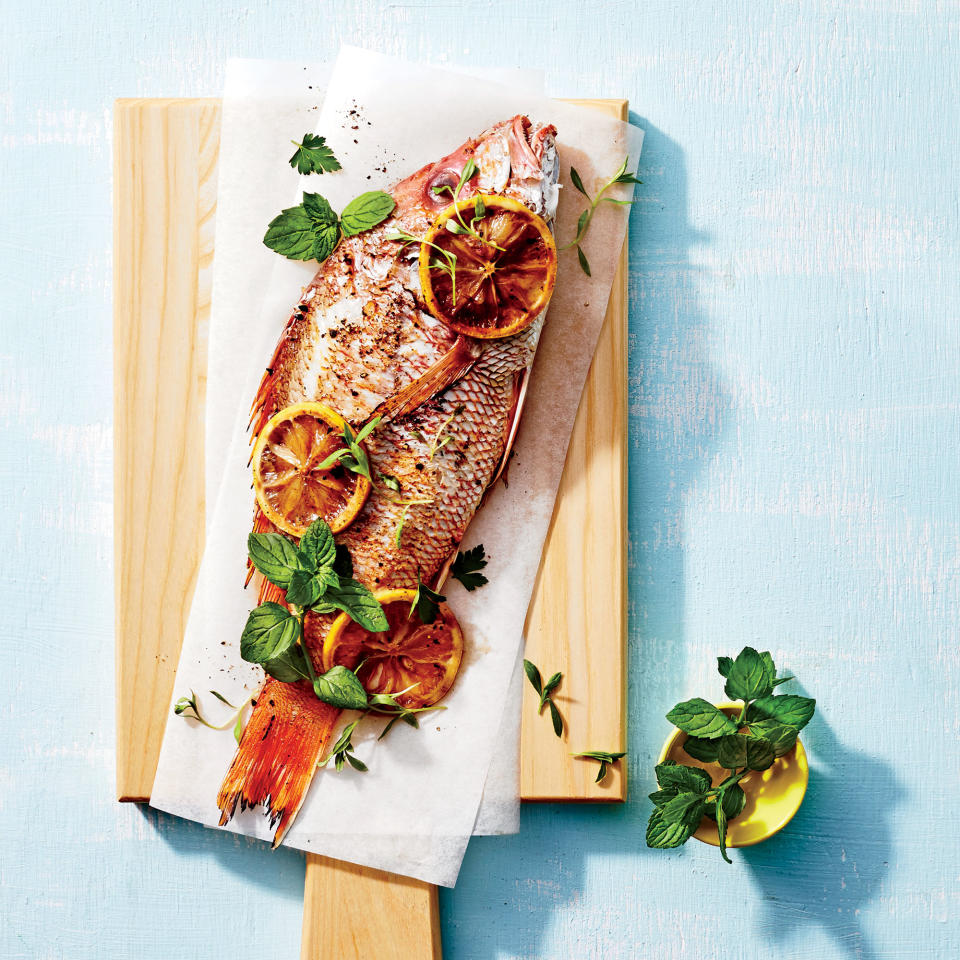Barton Seaver’s Tips on Grilling a Whole Fish
April showers bring May flowers, but at my house, April also coaxes the Weber from its winter hibernation. Like a buried bulb sprouting tender shoots, my grill sends up embers from its charcoal chimney, reanimating our outdoor lives.
As the temperatures rise the coastal waters warm, bringing species of all stripes and colors to the inshore lakes and rivers. Fishing trips again occupy weekends, and the market offerings begin to brighten. A great way to welcome this happy season is to grill up a whole fish.
What fish to grill? Why, nearly any that strikes your fancy. A few of the wild-caught fish I love for this preparation are scup (aka porgy), black sea bass, and snapper. There are also a number of domestically farm-raised fish that are sustainable and delicious. Some people may be under the impression that farms taint fish with antibiotics and other contaminants, but in the United States, aquaculture (fish farming) is highly regulated, yielding safe, healthy seafood produced with minimal impact on the environment. And farm-raised fish aren't just tasty-they offer a crucial way to supplement the stocks of wild-caught varieties year-round. Some of my favorite picks are hybrid striped bass, rainbow trout, and barramundi, all species that are only available commercially when farmed.
Whether farmed or wild, the key for grilling whole fish is to choose one that weighs about 2 pounds, give or take-though it's better to err on the larger side. First, remove the scales and nip off the fins. This is known as "dressing" a fish, and is a task that any good fishmonger will be happy to do for you. A thick marinade not only seasons the fillets with the flavors of herbs and garlic (see my recipe on page 96), but also provides a protective layer that will help prevent the fish from sticking to the grill.
Once you've presented the whole fish with fanfare, you can simply flake the succulent meat away from the bones with a fork. Guests can easily serve themselves. Reserve any unused marinade to spoon over the finished dish as a fresh, aromatic sauce. Another trick: scrape off any marinade that has stuck to the grill, and sprinkle those delicious crusty bits over the fish. The charred bits of tail, skin, and marinade become the coveted crumbs, tasty ornaments for the pièce de résistance: a lightly crusted, delicate and flaky, scrumptious centerpiece for your spring table.
How to Spot a Fresh Fish
Watch our video with Barton on how to tell if a fish is fresh.
Look for scales that are firmly attached and glistening with moisture. The eyes should be bright and clear; the gills should be vibrant and show no sign of drying out. Does the fish smell like fish? If so, then it's a no-go. Good, pristine-quality seafood smells only of the sea, violets, and scents of melon and cucumber.
Barton Seaver is a chef, sustainable seafood expert, and National Geographic Explorer, and the author of several books, including the forthcoming Two If By Sea, due out in May.




